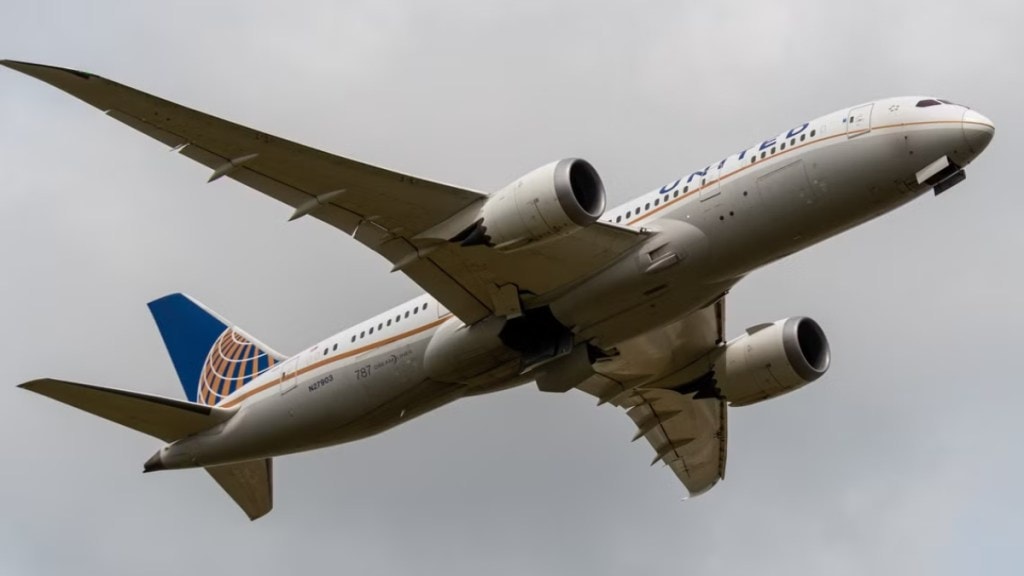In yet another midair scare, a United Airlines flight, Boeing 787-8 Dreamliner, heading to Germany, had to turn back shortly after taking off from Washington Dulles Airport on July 25. In an eerie similarity to the Air India flight that crashed in Ahmedabad, the Boeing 787-8 Dreamliner, too suffered a scary engine malfunction right after take-off. The flight named UA108, was on its way to Munich when its left engine failed. As the flight was climbing after takeoff, the pilots sent out a MAYDAY call because of the engine problem. The aircraft flew in circles for some time to release fuel before safely landing back at the airport.
Pilots had to dump fuel – What exactly happened after take-off?
The flight had reached an altitude of 5,000 feet when the crew declared an emergency and reported a malfunction in the left engine. The pilots quickly called for help, repeatedly saying ‘Mayday’ over the radio. They were in constant touch with the air traffic controllers and were working together to safely handle the emergency and bring the plane back to Washington Dulles Airport.
The Boeing 787-8 Dreamliner circled northwest of Washington in a holding pattern to safely dump fuel before landing, reported aviationa2z. The pilots asked to stay at 6,000 feet to manage the plane’s weight, and controllers gave them different directions to keep the aircraft clear of other flights and allow safe fuel dumping. The ATC had asked the pilots as to how much estimated time they would need to “hold, fuel or just get set up there?” The pilot answered that they would have to “climb six and adjust fuel”.
Boeing pilots and ATC remained in constant touch
As is the norm during emergency, the pilots and the ATC remained in touch the entire time to make sure they land safely. According to a report by aviationa2z, the pilot told ATC that the plane was dumping fuel at 6,000 feet while flying northwest. ATC then asked if the crew would be ready to land soon after the fuel dumping was done. The pilot said they would need about two more minutes. ATC then told the plane to fly in the direction of 020 degrees and asked the pilot to let them know once the fuel dump was complete.
ATC then asked which direction the plane could turn more easily. The pilot said right turns were better, so ATC confirmed they would keep the plane on its current heading and would begin directing it toward the runway in about two and a half minutes. ATC also asked for “clean speed,” and the pilot responded that slower would be better. The plane was then cleared to turn right and fly at a speed the crew found safe, avoiding bad weather nearby.
As fuel dumping neared completion, ATC handed the flight over to another controller. The new controller confirmed the plane wanted to remain at 6,000 feet for another minute. The pilot agreed but said they would soon begin slowing down for approach and would be ready to descend shortly.
Once ready, the pilot was told to descend to 5,000 feet and was cleared for an ILS landing on Runway 19 Center. Finally, ATC gave the plane permission to control its speed and transferred the crew to the airport tower frequency for landing clearance.
Emergency landing using Instrument Landing System
The report suggested that the pilots, after dumping the fuel, asked for permission to land using an Instrument Landing System approach on Runway 19 Center. The emergency landing was done safely but due to the engine failure, the plane could not move on its own and had to be towed off the runway.
In fact, the report says that the plane is still in the ground at Washington Dulles Airport. No injuries were reported.


